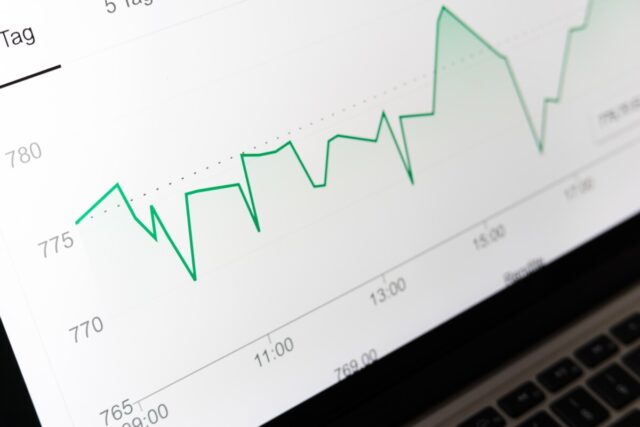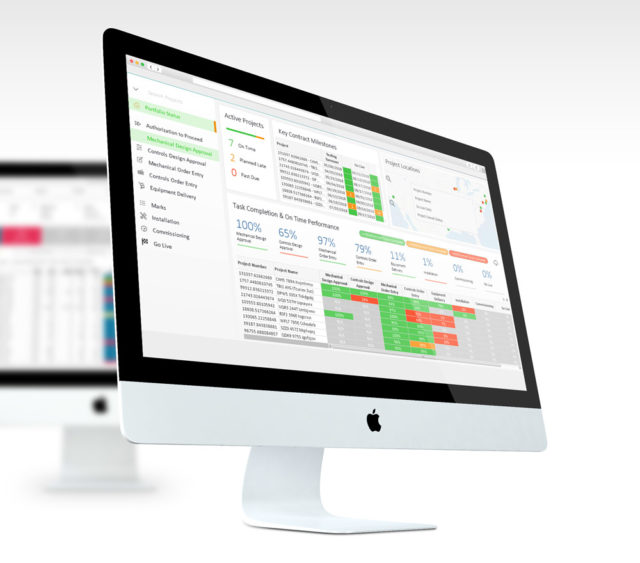As Business Intelligence Consultants, we’re lucky enough to get exposed to a myriad of business challenges being tackled at the coal face every day. This exposure also gives us front row seats to see what tools, ideas and methods companies are exploring to enhance their data environments and gain a competitive edge.
So, what are the hot BI topics your organisation should be thinking about in 2019?
1. Analytics Everywhere
Expect to see plenty more embedded analytics in 2019. The mainstream appetite for analytics has been on a steady rise, we see it in how Apple breaks down our battery usage on our phones, and in the way our credit card statements have become a flashy dashboard of our expenditure. Data literacy is on the rise too, and people want access to actionable insights at their fingertips. Analytics can now easily be embedded in your website, mobile apps, your ERP system, your CRM system and internal intranet. Is your organisation pushing analytics to the places it’s needed?

2. Yesterday’s News is Old News
Analytics is going ‘operational’ and demand for real time information is rapidly increasing. The typical BI platform is going to shift from reporting on ‘what happened yesterday’ to ‘what happened 5 minutes ago, and what do we predict will happen in the future’. More and more companies are looking to use their BI dashboards to monitor operational processes in real time, whether it be the factory floor, the cash register or social media campaigns. Quicker access to information means quicker decision making and this will create a competitive advantage for companies who can get it right. What’s your company doing to increase the pace of the data cycle?

3. The BI Crystal Ball – Automated Machine Learning
As they say, good data scientists are unicorns, and this has prevented most organisations leveraging the power of predictive modelling in their BI platforms. The explosion of automated machine learning tools changes the game and brings the power of data science to the masses. The use of machine learning tools will become just one more item in the skill basket of a BI Developer. For every piece of retrospective analysis, we will ask what the forward-looking view looks like. The pace at which we can build, modify and query predictive models is rapidly accelerating – in many cases this improvement translates to a shift from months to weeks, weeks to days, or even days to minutes – and this is going to help real time predictive analytics edge its way into operational decision making. We can now employ a ‘fail fast’ strategy to building models, with rapid iterations and automated testing. Where will predictive analytics have the biggest impact on your business or industry?

4. Cognitive Computing Will Lead the Way
Cognitive insights and suggestions will start to infest our BI platforms more and more. The power of data lies in self-service and getting analytics and actionable information to the front line. The power of cognitive insights is just one tool that will help enable the mainstream adoption of BI and guide a user’s approach to building and communicating analytics. Would a BI tool with a cognitive engine help accelerate the uptake of analytics in your organisation?

5. Data Quality, Governance and Trust
The rise of self-service analytics has quickly prioritised the need for a data quality strategy. The days of I.T being the gate keeper to all data are slipping away, and we’ll see a new breed of tools to monitor, manage and act on data quality issues in our BI platforms at the front line. KPMG reported that 84% of CEOs worry about data quality, and Gartner put the average cost to company of poor data quality at $13.5 million per year. Plenty of room for improvement here!
What else can we look forward to in 2019?
Streaming Data – We’re going to see increasing integration of streaming data from edge devices into BI platforms, and this is going to demand a hybrid approach to accommodate batch and streaming data sources. Think IOT, sensors, thermometers and wearable devices.
Mobile Analytics – This medium is growing but not as rapidly as predicted, attributed in part to many companies lacking a robust mobile strategy.
Advances in Natural Language Processing – This will enable business users to interact with their BI platforms via written and verbal commands across widely used mediums such as Slack.
More Cloud, More Subscriptions – Cloud is king, and monthly subscription is the way to pay. We’re going to see more services and platforms available in the cloud and less capital expenditure on IT infrastructure. This breaks down the barriers to entry presented by cost and takes a lot of risk out of the equation. It enables companies to move fast, try out new tools, build proof of concepts, and then scale up to a production deployment in very short cycles.
So that’s the top 5 I’ll be keeping an eye on. What ideas, tools and innovations are on your BI radar for 2019?
More Insights
-
Qlik to Power BI Migration

-
Client Product Reporting in FX Sales & Trading

-
Consolidating Financials for Multiple Acquisitions

-
How Machine Learning Can Transform the Financial Sector in 2024

-
Tracking Key Business Metrics using Power BI

-
Update on the future of Talend Open Studio

-
Multinational Bank’s Need of Fluid Understanding for their FX Pricing

-
Building a Single View of a Customer’s Portfolio to Support Regulatory Compliance

-
Exploring Change Data Capture (CDC)

-
🔍 Excel vs. BI Tools: Why It's Time to Evolve Your Data Strategy
